ONE DAY BEFORE THE TRIP TO MOSTAR

The plan to visit Mostar almost got canceled because of an unpleasant incident at the Dubrovnik bus station. I was denied boarding the bus because my ticket wasn’t printed, even though I had been waiting at the Dubrovnik bus station for an hour. The bus ticket I bought on getbybus.com needed to be printed, and since I was staying at an Airbnb, they didn’t have a printer. The Croatian bus staff were quite difficult, acting superior. They insisted I couldn’t board the bus without a physical ticket. Their bus system isn’t as advanced as Flixbus, where you can just scan a barcode from your email — it’s still manual.
Since I had been in Dubrovnik for a while and was eager to get to Mostar, Bosnia, I had no choice but to search for a place to print my ticket, even though it was almost 5 PM. As expected, all the shops were closed on Sunday, and the bus left without me. Heartbreaking.
According to Silvia, who was meeting me at the Dubrovnik station, the bus officer was arrogant, but another one was more reasonable. He actually tried to persuade the first officer to let me on the bus since I had already bought the ticket. Eventually, the stubborn officer changed his mind. However, by that time, I had already left to look for a place to print. Oh well, since I missed the bus, I had to buy another ticket at the counter for about 14 Euros for the next day’s departure at 8 AM. So, one more night in Dubrovnik… and I swear I won’t buy anything from getbybus.com again.
THE NEXT DAY….
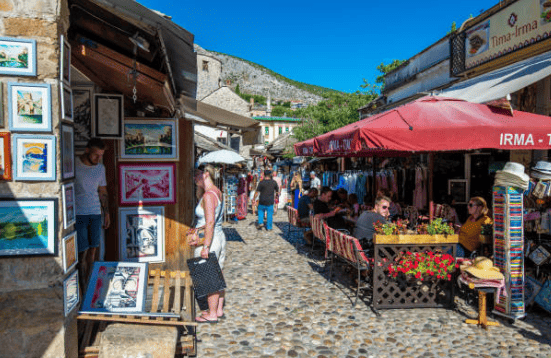
After a 4.5-hour bus journey and passing through the immigration checkpoints of both countries, I arrived at Mostar Bus Station, Bosnia-Herzegovina. My first impression wasn’t very positive, as the station looked old and poorly maintained, with streets full of old shops and a few building ruins riddled with bullet holes and random graffiti. But as soon as I turned towards the old town of Mostar, I instantly wanted to say “wowww”… Mostar looked exactly like the photos on the internet! I am very excited to explore Mostar!
EXPLORING MOSTAR, THE LITTLE TURKEY OF BOSNIA-HERZEGOVINA
Mostar is the fifth-largest city in Bosnia-Herzegovina and the most important city in the Herzegovina region, serving as a cultural and economic hub. In the mid-15th century, Mostar was under the rule of the Ottoman Empire. During this time, Mostar flourished into a bustling trade city known as Kopruhisar. This was also when the iconic Stari Most Bridge was built, connecting the west and east sides of the city. Today, Stari Most is the city’s most visited landmark and a prime example of Islamic architecture in the Balkans.
The Ottomans ruled Mostar for around 400 years. In the 19th century, the Austro-Hungarian Empire took over Bosnia-Herzegovina until Yugoslavia emerged. Bosnia-Herzegovina declared independence in April 1992 after Yugoslavia dissolved. Unfortunately, the fighting didn’t end, and ethnic battles continued, particularly between Bosniaks and Croats, which divided Mostar and destroyed many religious sites, including the Stari Most Bridge. The Croats bombed the bridge in November 1993. After the war ended, Stari Most was rebuilt in 2003. Today, Mostar has grown into a bustling tourist city, with many visitors taking day trips from Dubrovnik, Croatia. The city’s population, consisting of Bosniaks, Croats, and Serbs, now lives in harmony.
Mostar’s main tourist attraction, where Stari Most is located, is the Old Town. Built during the Ottoman period in the 15th and 16th centuries, the Old Town straddles both sides of the Neretva River, which divides the city. There are many traditional Turkish houses, mosques, and Turkish baths (hammams) here. Sadly, many of the buildings were destroyed during the war, but they’ve been rebuilt since.
Walking through Mostar’s Old Town feels like stepping into a Middle Eastern city from the past, rather than a European one. The narrow cobblestone streets are lined with stone houses that have been transformed into craft and clothing shops. Most of them sell Turkish coffee pots and cups, along with ceramic plates and tableware with bright, oriental patterns. There are also pashminas, bags, and Turkish-style carpets. Another shop sells lavender souvenirs. I loved strolling through Mostar while shopping for handmade crafts.
If you’re planning a trip to Dubrovnik or the Balkan region, make sure to add Mostar to your itinerary. I’ve been there and was amazed by the city. Here are some must-see attractions when visiting Mostar, Bosnia-Herzegovina:
1. Stari Most
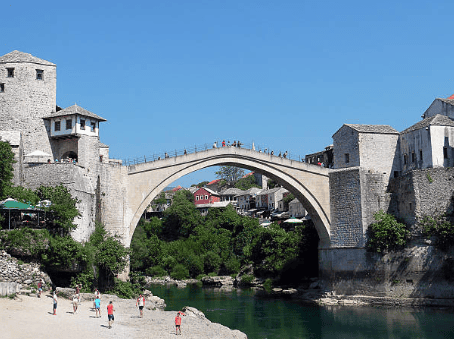
This classic bridge is Mostar’s iconic landmark and is often referred to as one of the best examples of Islamic architecture in the Balkans. Stari Most, which means “Old Bridge,” was built in the 15th century during the Ottoman rule. It was constructed over the Neretva River during the reign of Sultan Suleiman by architect Mimar Hayruddin, a student of the famous Ottoman architect Mimar Sinan. After being destroyed by the Croats during the Yugoslav war, the bridge was rebuilt in 2003. In 2005, this curved stone bridge was declared a UNESCO World Heritage Site.
A popular tourist attraction on Stari Most is watching young local men dive off the bridge into the Neretva River, especially in the summer. Though it seems like a tradition, they do it to entertain tourists, hoping for tips. Usually, one of them will pass around a money bag to the tourists gathered by the bridge.
2. Koski Mehmed Pasha Mosque
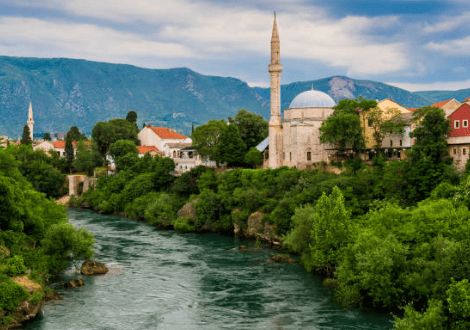
This mosque, located on a hillside right next to Stari Most, adds to Mostar’s classic landscape, giving it an exotic, ancient Middle Eastern vibe. Built in Ottoman architectural style, the mosque features brownish stone walls, a light blue dome, and a tall, pointed minaret. The entrance fee is 6 Euros, and you must remove your shoes before entering. The mosque’s interior is simple but beautiful, with a white dome adorned with red and blue motifs, along with intricate calligraphy.
One must-do activity when visiting the mosque is climbing the minaret for an amazing view of the Old Town, divided by the Neretva River. It’s breathtaking, almost like the Middle-earth scenery from The Lord of the Rings.
3. Karadoz Bey Mosque

Although Koski Mehmed Pasha Mosque is stunning and strategically located on the Neretva’s banks, Karadoz Bey Mosque is actually the largest in Mostar. Built in the 16th century in Ottoman style, it features a large light blue dome and three smaller domes. The 34.5-meter minaret is made of brownish stones. There’s a beautiful pavilion for ablution in the mosque’s courtyard. It’s still an active place of worship and was rebuilt in 2002 after being destroyed during the Bosnian War.
4. Old Town
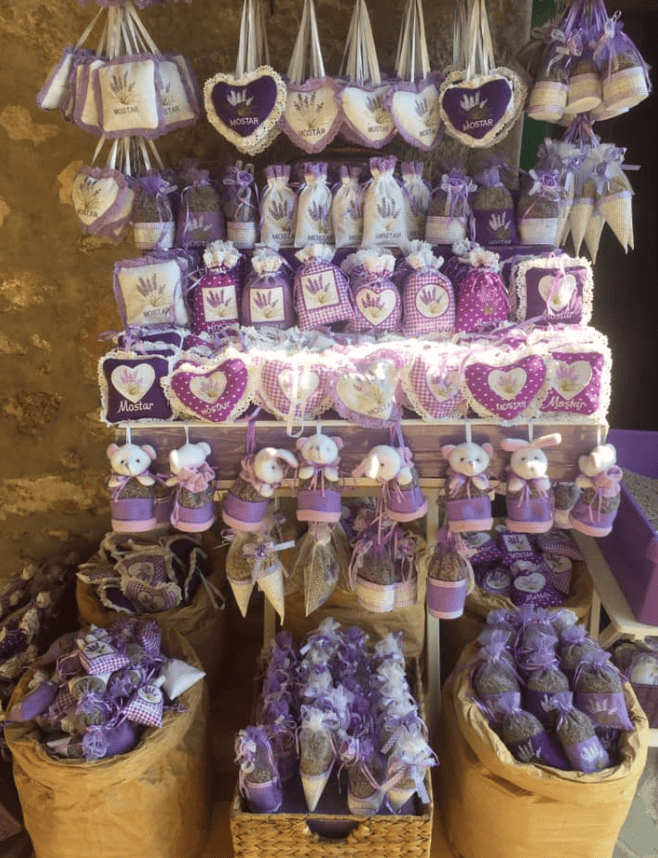
Exploring Mostar’s Old Town is like stepping back in time. The Turkish-style market sells traditional Turkish crafts, such as tea and coffee sets, ceramic tableware, carpets, and pashminas. Unfortunately, I only brought one medium suitcase for my 7-month trip, so I couldn’t buy much. But I did manage to buy a lavender pillow souvenir (4 Euros). Supposedly, if you place it inside your pillow, it helps you sleep well — and it really does!
Strolling through the Old Town, admiring the ancient architecture, browsing Turkish handicraft stores, and enjoying the turquoise river are highlights of any trip to Mostar.
5. Hammam Museum
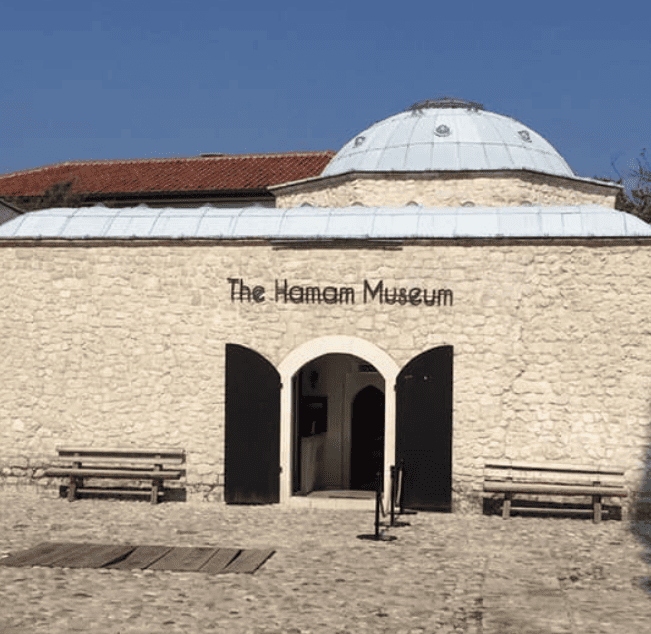
The Yugoslav War destroyed many mosques, Orthodox churches, synagogues, and hammams. Today, there’s only one hammam left in Mostar, now functioning as a museum. It has an Ottoman-style blue dome and stone walls. Entrance costs 2 Euros. Inside, you can see a beautiful Turkish bath made of ceramics, along with mirrors and various bath tools used in the 16th century. While it’s no longer a functioning bathhouse, it’s worth visiting to learn about the bathing culture of Mostar’s past.
6. Trying Bosnian Cuisine
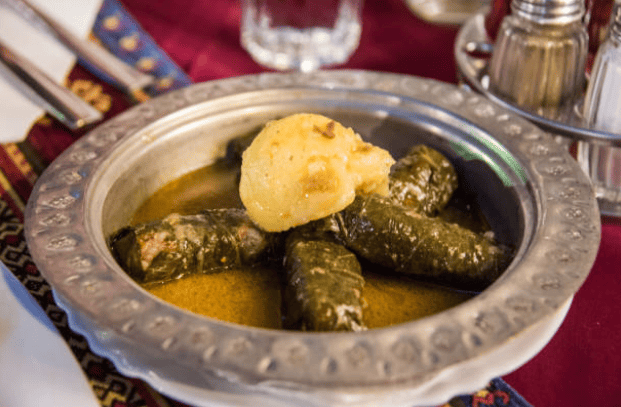
No trip to Mostar is complete without sampling its food. Bosnian cuisine is heavily influenced by Turkish flavors, and I was pleasantly surprised by how delicious it was. One restaurant I highly recommend is Sadrvan, located near Stari Most. The outdoor area is decorated like a garden, with fountains and giant Bosnian teapots. The staff wear traditional Bosnian clothing, and the menu offers authentic Bosnian dishes.
I tried japrak (stuffed cabbage with meat and rice), sausage, and Bosnian coffee. Japrak is wrapped in cabbage and served with mashed potatoes, while the sausage dish includes beef stew served with rice. But what really stood out to me was the Bosnian coffee, which is served on a copper tray with three cups. The first cup is for the coffee, the second contains sugar cubes, and the third is a metal ladle-like container with hot coffee. You pour the coffee into the cup and drink it — a unique and delightful experience!
For Muslim travelers, Mostar is very accommodating, as nearly all the food is halal. Other Bosnian dishes worth trying include cevapi, a long kebab made from lamb and beef served with Somun (Bosnian pita bread), raw onions, tomatoes, and cheese.

This steroid causes a rise in red blood cell production, which will get extra oxygen to the muscular tissues.
Anavar is vastly popular with female users, however ladies don’t require the kind
of post-cycle remedy that men do after an Anavar cycle.
An necessary thing to contemplate when planning your Anavar stack is the significant
benefit of its lack of water retention as a outcome of it doesn’t convert to estrogen.
Additionally, consider incorporating fat-burning exercises into your routine.
A PCT normally takes 4-5 weeks and includes aromatase inhibitors such as Arimidex,
Letrozole, and SERM merchandise such as Nolvadex and Clomid.
They assist stop injury results when coming off steroids – gyno,
lack of positive aspects – but additionally help boost
testosterone production. Post-cycle therapy is the a half of using steroids you
may have to use whether or not you would possibly be already on your first or tenth cycle.
It begins after the synthetic hormone is completed and is
supposed to hurry up the process of pure testosterone manufacturing.
However their preparation instances and transport together with
the dearth of frontend communication about exactly how long it will take
was honestly misleading. The first order took 5 weeks,
the second just obtained a tracking number after three, and since it’s coming from abroad,
it’s going to take one other two. The packaging and
so forth was discreet, there were no considerations with the shipping itself.
Nonetheless, I advocate curbing your excitement as you prepare your self to wait for over a month for something you order.
Anyway, finally the high quality merchandise arrived intact, however not
with out undue stress at the extreme wait time.
For this purpose, any steroid cycles for beginners must be created with loads
of analysis unless you need to risk critical problems.
Nandrolone is doubtless one of the most commonly used steroids for muscle growth.
When the liver is being taxed, as a defense mechanism, the physique
reduces urge for food in a bid to lower the amount of meals the organ has
to process. This combination of a high-sodium diet and the estrogenic nature
of Anadrol causes water to spill outdoors the muscle
cells, giving them a puffy look. Anadrol can be purchased conveniently at a neighborhood retailer or pharmacy solely in nations
where it’s 100 percent legal (i.e., Mexico). In comparison, Winstrol binds strongly
to SHBG and consequently produces robust masculine side effects
in girls. Winstrol additionally doesn’t convert into
estrogen, creating an optimal environment for virilization. However, we have found Anadrol to be a female-friendly steroid with a low affinity
for masculinization unwanted effects.
In this state of affairs, start the PCT when the final steroid has left
your system, i.e., the one with the longest half-life. Regular cardio must be carried out throughout this cycle to lower blood strain while
avoiding stimulants and high-sodium meals. Selling steroids and libido
(tanztheater-erfurt.De) may end up in up to 5 years in jail and a fantastic of
$250,000.
The body’s testosterone levels will rise when first taking Dianabol, as a outcome of it primarily being
exogenous testosterone. It does this by inhibiting the HPT (hypothalamic-pituitary-testicular)
axis. Dianabol also will increase red blood cell production, enabling extra blood circulate to the muscle tissue.
Oxygen is transported to the muscular tissues via the bloodstream; thus, with extra oxygen provide, muscular endurance improves.
The most secure strategy is to begin with lower doses and gradually
enhance as needed.
A testosterone ester should also be included in an intermediate cycle, and once more, the dosage will depend on what you’re
making an attempt to achieve and whether this is a hardcore slicing
cycle. Testosterone Enanthate is a long-lasting ester that can be utilized for a 12-week cycle alongside
Anavar. You can count on superb outcomes without water
retention with this cycle.
Anadrol is similar to Dianabol, inflicting impressive strength
and muscle gains (3). To sum up, the best steroids may help
you attain your bodybuilding goals quicker, but they come
with severe dangers and are illegal with no prescription. It Is necessary to consider the pros and cons and think
about safer options, like a healthy diet, relaxation, and
natural dietary supplements.
Nosebleeds and headaches can occur whereas on Anadrol, which could be
a signal of elevated blood strain. If this happens, get a check-up, and if your blood stress is high,
cycle off instantly. With Anadrol, research have shown an insignificant influence on LDL ranges but a notable decline in HDL ranges (12).
In the beforehand cited examine, the 31 elderly men taking 50–100 mg of
Anadrol per day skilled a discount in HDL by 19 and 23 factors.
Effective TUDCA dietary supplements could be purchased online, typically
costing in the area of $20–30.
Gym-goers and bodybuilders seeking even bigger muscle features commonly take larger doses, starting from 30 to
50 mg per day. Elite bodybuilders (IFBB pros) might take up to one hundred mg; however, the chance of developing unwanted effects
is excessive with such mega doses. Moreover, some analysis suggests DHT could
be the higher muscle-building hormone when in comparison with
testosterone (23). This would make sense contemplating a few of
our bodybuilders report much less muscle and energy positive aspects when stacking Dianabol with Proscar (finasteride), a
DHT inhibitor. Research additionally confirms
this, with 51.9% of males experiencing muscle
loss or muscle tone when taking finasteride (24).
Stanozolol is a synthetic anabolic steroid, which
is a spinoff of dihydrotestosterone (DHT). Nonetheless,
it’s no slouch within the muscle growth department either, and
a benefit is that it doesn’t aromatize, so it’s less likely to have you experiencing issues
like water retention. The modified DHT formed into Stanozolol has elevated anabolic
properties for muscle and strength positive aspects while decreasing its
androgenic properties. Superior slicing cycles are significantly favored amongst these gearing
up for bodybuilding competitions, focusing on preserving as much muscle mass as potential whereas promoting fat loss.
A common stack consists of Testosterone Propionate, Masteron Propionate, and Trenbolone Acetate.
Your doctor will inject the steroid immediately in the affected joint or muscle.
This can deliver reduction from inflammation, ache, and swelling for several weeks or months.
“We have to teach individuals,” says Thomas O’Connor, aka the “Anabolic Doc,” who specializes
in patients looking for restoration from anabolic-steroid use.
O’Connor doesn’t advocate using any of those medicine and has dozens of horror tales from patients to assist
his position—including, in excessive cases, dying.
And Fakhri Mubarak, a prep coach who speaks overtly about his own steroid use, strongly
recommends finding a well being professional you possibly can work with if you do select to make use
of performance enhancers. Another method to categorize various kinds of AAS medication is
by the nature of origin.
You can easily find them on-line or at well being food shops beneath various brand names offering different formulations
designed for specific wants corresponding to bulking up or
slicing down. It ought where to buy anabolic steroids online (Grover) be noted
that as a outcome of these medications are concentrated, coming off
AAS side effects may be more intense. It is essential to search
out addiction treatment as soon as attainable after the first signs of
abuse are detected. Read on to discover the utilization of these drugs and why
they’re essentially the most abused.
Individuals should discuss the risks and advantages of HT with their doctor.
Individuals taking hormones long-term may need regular monitoring to trace hormone
ranges and detect any concerns promptly. Urine
tests are carried out to verify for breakdown products of anabolic steroids.
These products could be detected up to 6 months after use
is stopped. Steroids are prescribed in the UK to deal with a variety of
circumstances together with asthma, hay fever,
eczema, arthritis, inflammatory bowel disease (such as Crohn’s disease), and multiple sclerosis (MS).
Nitric-Max is an awesome bodybuilding complement
formulated to help towards blood circulate & oxygen circulation, increasing your power, vitality & recovery.
D-Bal’s powerful formulation mimics the results of Methandrostenolone, otherwise generally recognized as Dianabol,
the granddaddy of steroids. Interestingly, a study revealed in the Archives of Common Psychiatry found that about
30% of steroid customers develop a dependence syndrome, which may lead to withdrawal signs
once they stop using the substances. One method of categorizing the
various varieties of corticosteroids is based
on how we use them. Right Here are the totally different forms of
corticosteroids and the way they are used. With the
growing market of steroids, Home Pharmaceutical
Co., Ltd. steadily into the steroid production industry,
and focus in steroid business, has Turn Into the European and American anabolic steroid.
In Canada, researchers have concluded that steroid use amongst scholar
athletes is extremely widespread.
While AAS are the most generally talked-about sort of steroid, there is another selection called glucocorticoids or corticosteroids.
These are naturally occurring hormones produced within the adrenal glands
located on high of your kidneys (33). In males, its levels increase during puberty to promote the development of male sex traits, corresponding to body hair progress, a deeper voice, sex drive, and elevated height and muscle mass.
Anabolic-androgenic steroids (AAS) are an artificial form of testosterone, which
is the primary male intercourse hormone (1).
Novices may overlook the necessity of post-cycle therapy after a steroid
cycle, however post-cycle therapy is just as essential as the cycle itself.
Even when you eat rather less than you should
be for mass gain, you’ll notice a decreased tendency to lose muscle mass as a end result
of the physique is working at such an elevated anabolic state with steroids.
People and other animals observe the mevalonate pathway for the
biosynthesis of steroids. In this pathway, they make use of acetyl-CoA as a building
block for the DMAPP which is expanded as dimethylallyl pyrophosphate,
and IPP that is expanded as isopentenyl pyrophosphate.
Steroid hormones are concerned in the functioning of
the control of metabolism, growth of intercourse characters, irritation,
features associated to the immune system, and salt-water stability.
Topical steroids used for the pores and skin are available as lotions, ointments or lotions.
The quantity of topical steroid that you must apply is usually measured
by fingertip units. For extra information see the separate leaflets called Topical Steroids for
Eczema and Fingertip Items for Topical Steroids.
Thanks for sharing. I read many of your blog posts, cool, your blog is very good.